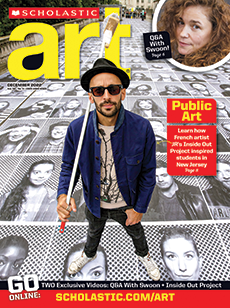This article introduces the importance of drawing in art history and discusses some drawing techniques
This article explores Leonardo da Vinci's scientific and artistic innovations
Skills Sheets (11)
Skills Sheets (11)
Skills Sheets (11)
Skills Sheets (11)
Skills Sheets (11)
Skills Sheets (11)
Skills Sheets (11)
Skills Sheets (11)
Skills Sheets (11)
Skills Sheets (11)
Skills Sheets (11)
Lesson Plan (2)
Lesson Plan (2)
An article about five ways to use line in drawing
Videos (1)
Skills Sheets (11)
Skills Sheets (11)
Skills Sheets (11)
Skills Sheets (11)
Skills Sheets (11)
Skills Sheets (11)
Skills Sheets (11)
Skills Sheets (11)
Skills Sheets (11)
Skills Sheets (11)
Skills Sheets (11)
Lesson Plan (2)
Lesson Plan (2)
This article discusses the importance of drawing as a tool for planning other compositions, and compares and contrasts Café Terrace on the Place du Forum with its preparatory drawing.
Skills Sheets (12)
Skills Sheets (12)
Skills Sheets (12)
Skills Sheets (12)
Skills Sheets (12)
Skills Sheets (12)
Skills Sheets (12)
Skills Sheets (12)
Skills Sheets (12)
Skills Sheets (12)
Skills Sheets (12)
Skills Sheets (12)
Lesson Plan (2)
Lesson Plan (2)
Hands-on studio art project to help students create their own ink drawing with contour lines
Videos (1)
Lesson Plan (1)
This debate poses questions about art and vandalism
Skills Sheets (1)
Scholastic Art & Writing Awards winning artist Anna Anderson discusses her award-winning drawing in a Q&A
An interview with Arthur Lien about his job as a courtroom sketch artist at the Supreme Court
A short news story about Thomas Lamadieu's illustrations
A short news story about Nicolas Holiber's public sculpture
A short news story about digital images of insects and arachnids
